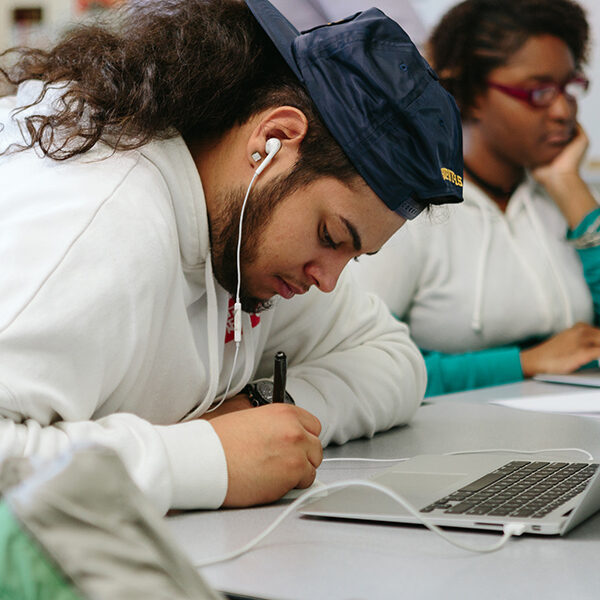
At TLA, we strive to offer resources for a wide variety of school settings. In our latest school model profile, we are excited to feature our first alternative high school blended learning model, Bronx Arena High School. Traditional school models have often failed students at Bronx Arena. Located in Bronx, NY, students who attend this transfer school are overage, under-credited, and often attempting to make it through school one last time. As a transfer school (also called an alternative or continuation school in different parts of the country), Bronx Arena is dedicated to helping students who want to succeed but have experienced many obstacles. In order to best meet the needs of all of their students, Bronx Arena uses a highly personalized model of blended learning as its instructional approach.
Every resource at Bronx Arena is dedicated to serving its students in the best possible way. All of Bronx Arena’s 200 students have struggled in traditional environments and have unique academic and social needs. Given these challenges, Bronx Arena has to use its resources flexibly to personalize learning for every student.
Personalization at Bronx Arena starts with a Credit Map. When a student transfers to the school, educators review their transcript to determine what they need to graduate. They then work with the student to build a highly customized plan, or Credit Map, that details the credit sequence they need to progress through in order to graduate. Every student has one of these individualized plans, which means students work on highly varied content throughout the school day. Since students might be working on different subjects or skills, Bronx Arena developed four-hour open time blocks called Arenas. Arenas are staffed with a generalist teacher, who helps students set learning goals based on their graduation plan. This teacher is also the first line of support for the student and coordinates additional supports, such as bringing in content specialist teachers throughout the day. This format enables students at Bronx Arena to be responsible for their own learning (a skill the school helps them develop over time), while still having the structures and supports they need to identify challenge areas and provide academic supports.
Bronx Arena also provides a wide range of social supports to all of its students. The New York City Department of Education enables transfer schools to work with social services organizations and, since its founding, Bronx Arena has worked with SCO Family of Services. The structure of social supports within the school closely mirrors the academic support structure, and an SCO Advocate Counselor works in each Arena. The Advocate Counselors work closely with the generalist teachers to coordinate individual supports for every student, such as: counseling, academic advising, goal-setting, attendance outreach, and mediation, among others. By providing strong social supports, Bronx Arena is able to strive toward their goal of all students having healthy mindsets and a safe space to be successful in their learning.
By providing a high-quality blended learning environment, Bronx Arena not only helps students progress in their learning but also build ownership of their learning through self-management skills. Their system is structured to enable its students, upon graduation, to have the knowledge and skills needed to complete a college course. This is successfully reflected in the fact that 90% of its graduates who pursue higher education return to college after completing their first year (a high mark that is an indicator of college success).
Blended and personalized learning can be effective instructional strategies in complex and challenging educational circumstances. If you are aware of other good examples of blended learning at work in non-traditional settings, please send them our way via Twitter @learningaccel or via email daniel.owens@learningaccelerator.org.

